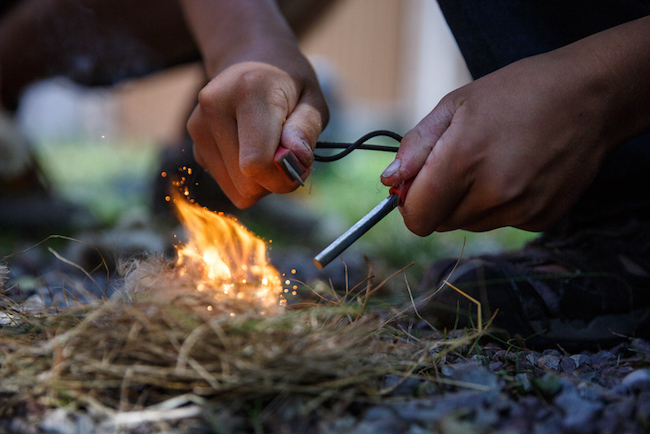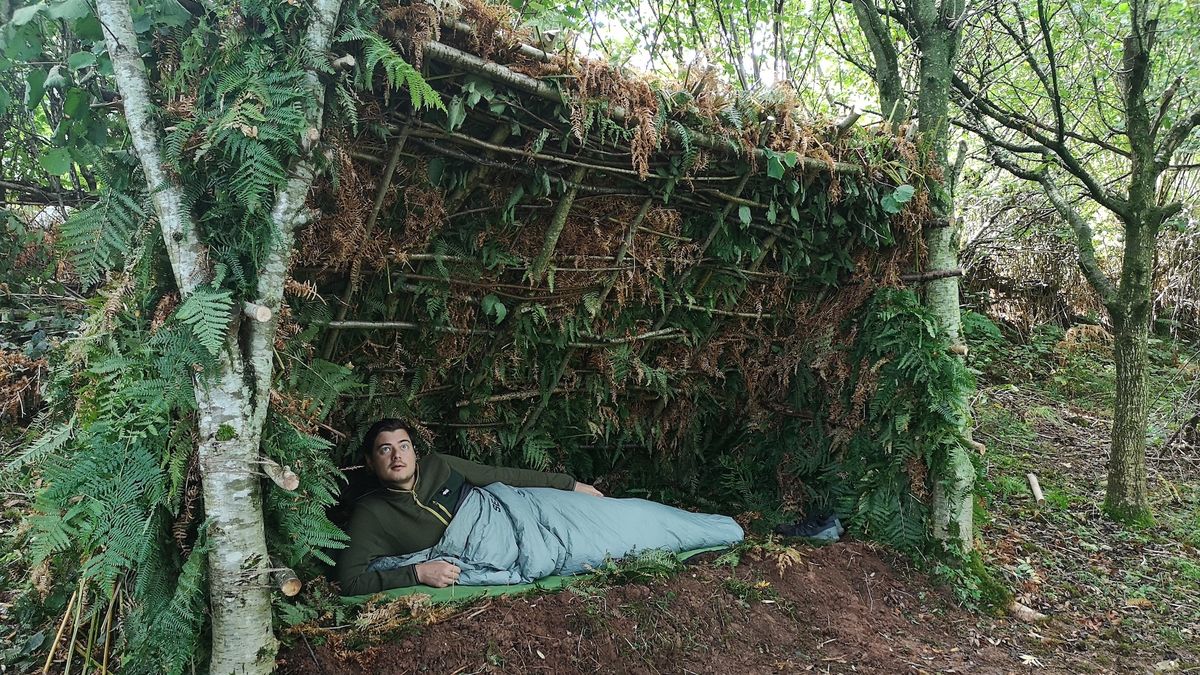Being able to start a fire without matches is a fundamental survival skill. Whether you’re an avid outdoors enthusiast or simply want to be prepared for unexpected situations, knowing alternative fire-starting methods can be a lifesaver for warmth, cooking, signaling, and purifying water. I’ve “encountered” countless scenarios where this knowledge has been crucial, and mastering these techniques can significantly increase your chances of survival in the wilderness. This detailed guide will walk you through several proven methods to start a fire without matches, empowering you with this essential skill.
Step 1: Preparation is Paramount – Gathering Your Materials
Regardless of the method you choose, having the right materials is crucial for success.
- Tinder: This is your easily ignitable material. It needs to catch a spark or ember and sustain a flame long enough to light your kindling. Excellent natural tinder includes:
- Dry Birch Bark: Peels off easily and often ignites even when slightly damp.
- Cottonwood Fluff: Found inside seed pods, it’s very flammable when dry.
- Dried Grasses and Leaves: Ensure they are completely dry. Crush them into a bird’s nest shape.
- Pine Needles (Brown and Dry): Work well when bundled loosely.
- Fungi (like Amadou): A tinder fungus found on trees, known for catching sparks easily.
- Char Cloth (Man-Made): If you have some, it catches even the faintest spark.
- Kindling: These are small twigs and sticks, slightly larger than tinder, that will catch fire from the tinder’s flame and help build a larger fire. Gather a variety of sizes, from pencil-lead thickness to about the thickness of your finger. Ensure they are dry.
- Fuelwood: These are larger pieces of wood that will sustain your fire once it’s established. Gather a good supply of various sizes, starting with slightly larger than kindling and progressing to thicker logs. Again, dryness is key.
Step 2: Method 1: The Reliable Ferro Rod and Striker
A ferrocerium rod (also known as a ferro rod or fire steel) and a striker are a reliable and relatively easy way to create sparks in various conditions.
- Prepare Your Tinder: Create a small, loose bundle of your chosen tinder.
- Position the Ferro Rod: Place the tip of the ferro rod close to your tinder bundle, angled slightly downwards.
- Use the Striker: Hold the striker firmly and scrape it down the length of the ferro rod with a quick, controlled motion. Aim to direct the sparks directly into your tinder bundle. Avoid sawing back and forth; a single, firm scrape is more effective.
- Catch the Spark: With enough practice, you’ll shower sparks onto your tinder. Gently blow on the tinder to encourage any embers to grow into a flame. Be patient; it might take several strikes.
- Transfer to Kindling: Once you have a small flame in your tinder, carefully place it in the center of your kindling bundle. Gently blow on the kindling to help it catch fire.
- Build Your Fire: Gradually add larger pieces of kindling and then fuelwood to build a sustainable fire.
I personally always carry a ferro rod and striker in my outdoor gear. They work even when wet, making them a dependable option.
Step 3: Method 2: Harnessing the Sun with a Magnifying Glass
On a sunny day, a magnifying glass can focus the sun’s rays to create enough heat to ignite tinder.
- Choose Your Tinder: Dark-colored, dry tinder works best for this method. Char cloth is particularly effective.
- Focus the Sunlight: Hold the magnifying glass at an angle to concentrate the sunlight into the smallest, brightest possible spot on your tinder.
- Be Patient: Hold the magnifying glass steady, keeping the focal point on the same spot of your tinder. You should start to see smoke after a short while.
- Encourage an Ember: Once you see consistent smoke, gently blow on the tinder to help the smoldering spot turn into a glowing ember.
- Transfer to Tinder Bundle: Carefully place the ember into a larger, loosely packed tinder bundle. Gently blow on it until it ignites into a flame.
- Build Your Fire: Proceed to light your kindling and fuelwood as described in Method 1.
This method is straightforward but relies entirely on sunny conditions.
Step 4: Method 3: The Friction-Based Bow Drill (More Challenging)
The bow drill method uses friction to create an ember. It requires practice and specific materials.
- Gather Your Materials: You’ll need:
- Fire Board: A flat piece of dry wood (about 1 inch thick) with a small notch carved into it.
- Spindle: A straight, dry stick (about 1 foot long and finger-thick) with a rounded end.
- Bow: A slightly flexible stick (about 2 feet long) with strong cordage (like paracord) stretched tightly between the ends.
- Handhold: A sturdy piece of wood or smooth stone with a slight indentation to place on top of the spindle.
- Tinder Bundle: Prepared as in Method 1.
- Prepare the Fire Board: Carve a small indentation (socket) near one edge of the fire board. Next to it, carve a V-shaped notch leading to the socket.
- Position Everything: Place the fire board on the ground. Kneel with one foot on either side to hold it steady. Place the spindle in the socket on the fire board. Put the handhold on top of the spindle, applying downward pressure. Loop the bowstring around the spindle once, in the middle.
- Start Bowing: Move the bow back and forth in a sawing motion, keeping the spindle rotating. Maintain consistent downward pressure with the handhold.
- Create an Ember: Continue bowing for several minutes. Friction will create heat, and sawdust will accumulate in the notch. Eventually, this sawdust will get hot enough to form a glowing ember.
- Carefully Transfer the Ember: Gently tap the fire board to release the ember onto a piece of dry bark or leaf.
- Ignite the Tinder: Carefully place the ember into your tinder bundle and gently blow on it until it ignites into a flame.
- Build Your Fire: Transfer the flame to your kindling and fuelwood.
The bow drill requires significant practice and the right type of wood. It’s a valuable skill to learn but can be frustrating for beginners.
Step 5: Method 4: The Hand Drill (Very Challenging)
The hand drill method is similar to the bow drill but uses your hands to rotate the spindle. It’s even more difficult and requires dry, soft wood.
- Gather Your Materials: You’ll need a fire board (similar to the bow drill) and a straight, dry spindle about 18-24 inches long.
- Prepare the Fire Board: Carve a socket and notch as described for the bow drill.
- Position the Spindle: Place one end of the spindle in the socket on the fire board.
- Rotate the Spindle: Place your hands on top of the spindle and rub them back and forth quickly, pressing down firmly. As your hands reach the bottom, move them back to the top and repeat. The goal is to create a continuous spinning motion.
- Create an Ember: Continue rubbing until you create a glowing ember in the notch. This can take a significant amount of time and effort.
- Ignite the Tinder and Build Your Fire: Follow the same steps as in the bow drill method.
The hand drill is one of the most challenging fire-starting methods and requires significant strength, coordination, and dry, suitable wood.
Step 6: Method 5: The Fire Plow (Less Common, Specific Materials)
The fire plow method involves rubbing a stick against a groove in another piece of wood to create friction and an ember.
- Gather Your Materials: You’ll need a softwood base with a groove carved into it and a harder, pointed stick (the plow). Both pieces must be very dry.
- Plow the Stick: Place one end of the pointed stick in the groove of the base wood. Rub the stick back and forth vigorously, applying downward pressure.
- Create Sawdust: The friction will create fine sawdust at the end of the groove.
- Continue Until Ember Forms: Keep plowing until the sawdust becomes hot enough to form a glowing ember.
- Ignite Tinder and Build Fire: Carefully transfer the ember to your tinder and proceed as with other methods.
The fire plow method requires specific types of wood and can be quite tiring.
Step 7: Essential Tips for Success
- Practice: The key to successfully starting a fire without matches is practice. Practice these methods in a safe environment before you need to rely on them in an emergency.
- Use Dry Materials: Wet tinder, kindling, and fuelwood will not ignite easily. Look for dry materials, even inside dead standing trees.
- Protect Your Tinder from Wind: Shield your tinder bundle from wind while trying to catch a spark.
- Be Patient: Starting a fire without matches can take time and effort. Don’t get discouraged if you don’t succeed on your first try.
- Safety First: Always build your fire in a safe location, away from dry vegetation and overhanging branches. Have water or sand nearby to extinguish the fire if needed.
My Personal Perspective on Wilderness Fire Starting
While I haven’t personally been in a survival situation requiring these methods, I’ve dedicated time to understanding and learning about them. The ability to create fire is a cornerstone of survival, providing warmth, safety, and the means to cook and purify water. Mastering even one of these techniques can significantly boost your confidence and preparedness in the outdoors. The ferro rod method is generally considered the most reliable for beginners.
Learning how to start a fire without matches in the wilderness is a valuable skill that can provide comfort and safety in survival situations. By understanding these methods and practicing them, you can increase your self-reliance and preparedness for the unexpected. Stay safe and happy trails!
SEO Meta Description: Learn how to start a fire without matches in the wilderness using various methods like ferro rods, magnifying glasses, and friction techniques. Essential survival skills explained step-by-step.






